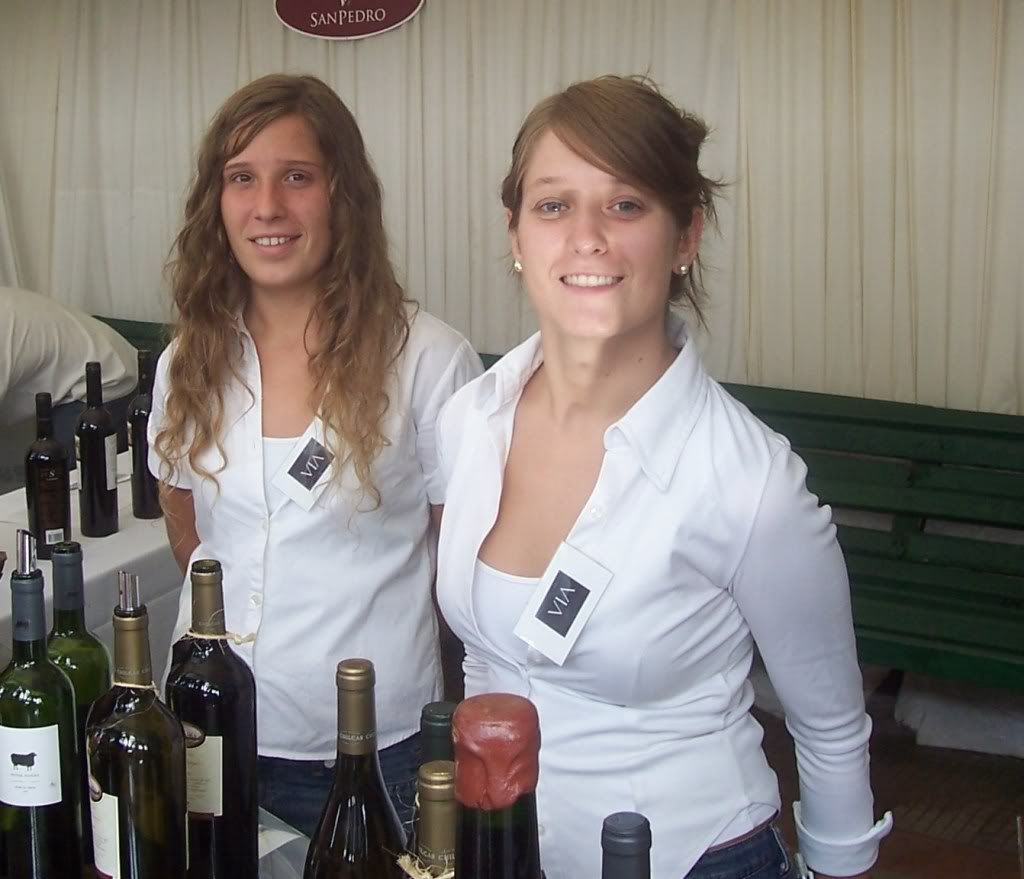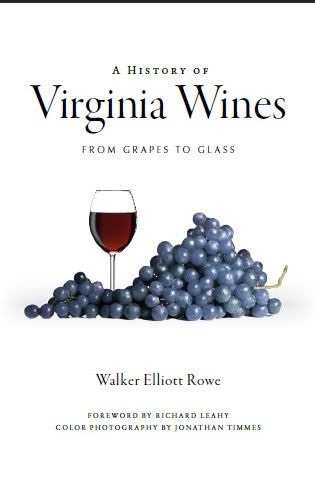After 4 years of planting my own grapes I took a part-time job taking care of a 2 acre vineyard only 4 miles from my house--so this was two years ago. Someone else had planted it and abandoned it so it was scarcely alive when I went into the vineyard with a gang of Mexicans to hoe out the vines and chop the grass back to civility. The $100K irrigation system was not working and the ground was hard from drought. Four year old vines there were only a few inches tall if they were alive at all.
The vineyard was surrounded by an invisible fence dog retention fence powered by a solar electric charger but the dogs were long gone. There was a building where I could store equipment and the trellis system was complete. The owner, Mr. Jacquemin, had a DR lawnmower which is what I used to cut the grass.
There were two blocks of grapes there: 1.3 acres of viognier and 0.3 acres of cabernet franc. Mr. Jacquemin would not did not want to replant the viognier the first year I took it over believing because of his bad experience that viognier vines should not grow on his farm this despite the fact that the same grape flourished on my farm. So I did what he said and focused on the 330 cabernet franc vines 80% of which died that winter. In the spring I bought 200 cabernet franc vines from a local winery which I planted in June.
For me this vineyard was an excellent place where I could put into practice the lessons of organic soil science that I had learned. I would not tend these vines purely organically---there is no reason to do that unless you are some kind of nutty ideologue—but I wanted to mineralize the soils per the instructions of Gary Zimmer.
So I followed his advice and started the fertilizer program with lime and rock phosphate. The soils of the vineyard were 5.1 and 5.4 PH which is 10 times as acidic as the vegetable garden on my farm at that time. So in this environment it would have been best to put down rock phosphate first and then limestone later for acidic soils break help break down the phosphates from the rock phosphate. I wanted that soil to be alive, teeming with earthworms, friable, and have a good tilth. This would take some time as the soils here were too high in potassium, deficient in magnesium, and with roughly the same citation exchange capacity as sand.
I put my ideas down on paper in a letter to Mr. Jacquemin:
Looking at your soil report, the limiting factors in your vineyard are calcium (Ca), PH, phosphorous (P), and trace elements. Your vineyard soils at 5.1 and 5.4 PH are more than 10 times as acidic as they should be and at least 10 times as acidic as my vegetable garden. The calcium level in your vineyard should twice what it is. And phosphorous more than doubled. Not to worry because we have a plan. To sweeten the soil we add lime (calcium carbonate). PH is a measure of the number of hydrogen ions in the soil. When you mix calcium carbonate into the soil it reacts with the hydrogen to produce carbon dioxide gas, water, and in the process you lose hydrogen ions while at the same time gaining valuable calcium. As hydrogen disappears the soil becomes more alkaline, the PH increases, the soil is said to become "sweeter". This allows the plant to take up from its roots minerals and trace elements which it otherwise could not do because the acidic soil interferes with this process becoming a limiting factor no more.
Rock phosphate is part of your program. This is a naturally mined source of phosphorous. Phosphorous is needed for healthy roots and vines and for this reason I have already applied rock phosphate to the cabernet franc vineyard along with dolomitic limestone. This type of lime includes magnesium which you need as well. We are using organic fertilizers as opposed to the highly soluble chemical fertilizers manufactured using petroleum. Naturally mined rock is preferred as it will break down in the soil slowly over time. There will be a point in a few years where we no longer need to apply fertilizers with this approach whereas the conventional farmer using petroleum based fertilizers has to apply them year after year and in the process damages roots and makes the soil compaction problem worse. Hard soils cannot drain water and grapevine roots like other roots shut down when they are drowned. Your vineyard will be healthy, your fruit less prone to disease, and the earthworms will return to this dead soil.
In their current state, the soils in your vineyard have all the vitality of sand. The CEC (catation exchange capacity) at 4.4 means they (the cations) are limited in their ability to hold magnesium and phosphorous (anions). This means fertilizer needs on an annual basis are fairly high since what you apply to the soil tends to pass right through. So in addition to getting the soils in balance and healthy we have to feed soluble fertilizers to the vines. We will do like one of the local tomato farms and buy a 50 gallon tank of liquid fish fertilizer and feed it to the vines using the irrigation system. This is call "fertigation".
I told Ann Pallie I would come get her horse manure: all of it. (It would be cheaper for you to have a truck come get all of it at once than for me to make many trips. I will look for a trucker.) Her horse manure is ideal because it contains both carbon (sawdust) and nitrogen (manure) in ratios which facilitate rapid decomposition. The end result is humus. We need to spread humus on the vineyard to get the organic material up in the soil and do this every year. This stimulates bacteria and fungi and other microbial life to work on the minerals in the soil releasing them to the roots and thus the vine. Over time this will improve the CEC as well. Humus improves soil texture (tilth), makes it crumble (friable), and helps the soil retain moisture.
Soils need anions like sulfur and boron added each year because these have a negative electric charge and thus cannot cling to negatively charged clay soil particles (in fact they are pushed away). So they leech into the soil and the plant can no longer reach them. But we are covered. I have a bag of calcium borate in your tool shed and have applied about 1 lb to the cab franc vineyard (it does not take much). And sulfur is sprayed on the vineyard as a protection against powdery mildew as is copper sulphate. So the spray program covers the copper and sulfur needs which we add boron by hand.
The final part of the soil nutrition plan is to plant and shallow incorporate into the soil legumes like clover to add nitrogen to the soil as well as smother crops like rye grass to keep out the weeds and poison ivy. I planted both crimson and red clover in the cab franc vineyard. These plants "fix" nitrogen from the air (80% of the air we breath is nitrogen) and draw it into the plants. So when the plant is tilled into the ground it releases nitrogen back into the soil for other plants to use. Nitrogen is not listed on the soil report because it is highly volatile. When you apply it is drifts off into the air in the form of ammonia and leeches in the soil in the form of nitrates. So when you incorporate rate it you need to till the soil or lose most of it in the air or better yet grow your own nitrogen in the manner I just described.
Anyway that is the plan with regards to soil health. Of course the plan for disease, weed, and mildew control is another chapter in this volume of information.










No comments:
Post a Comment